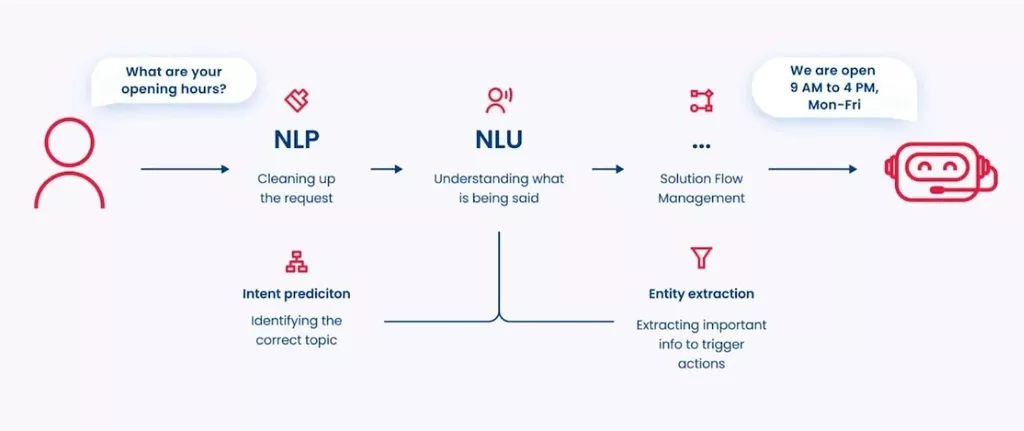Application testing and growth usually proceed simultaneously through the application’s lifecycle. For instance, agile development methodologies use automated testing tools to test the entire code base every time builders make a software program ai networking change. They present mechanisms for monitoring and managing adjustments to the application’s code, ensuring that each one modifications are correctly documented, reviewed, and applied. This allows for easier rollback to previous versions if needed and helps stop conflicts and inconsistencies within the codebase.
While there could additionally be refined variations in their definitions, these references are usually used to explain the identical idea of managing the lifecycle of software functions. Utility lifecycle management supports agile and DevOps development approaches by integrating these disciplines collectively and enabling groups to collaborate extra successfully on your group.. The time period is a portmanteau to describe the collaborative strategy that growth and operations teams are supposed to take.
Developers On Aws
- The key components of ALM embrace necessities management, development and construct management, testing and quality assurance, deployment and release management, and monitoring and maintenance.
- Unlock hybrid cloud potential with AI inference, migration and infrastructure management.
- For instance, software-as-a-service apps have to be deployed on the corporate’s internal servers, while users can access net apps through the internet.
- In summary, ALM stands for Utility Lifecycle Management and is a term that refers back to the means of managing the complete lifecycle of an software.
- By integrating threat administration practices into the ALM framework, organizations can proactively mitigate risks and enhance the overall quality and stability of their software purposes.
They present a centralized platform for managing all elements of the application lifecycle, from necessities gathering and planning to coding, testing, and deployment. This permits groups to collaborate more successfully and reduces the chance of miscommunication or data loss. ALM, which stands for Software Lifecycle Administration, refers back to the set of practices, processes, and tools that facilitate the management of an application all through its entire lifecycle. In the context of group collaboration, ALM performs an important position in streamlining communication, fostering collaboration, and making certain the successful delivery of software tasks. ALM is primarily centered on enhancing software program quality by guaranteeing that all stages of the software program growth lifecycle are well-defined and properly executed.
When the applying is built, strong check instances make certain that the product meets business and regulatory necessities, including safety and privateness necessities. In the realm of ALM, identifying and prioritizing software program requirements is an important task that plays a major function in the development course of. ALM, which stands for Software Lifecycle Management, is a time period that refers back to the process of managing the software growth life cycle from the initial idea to the ultimate deployment and past. In relation to software program necessities, ALM defines the imply for documenting, organizing, and tracking the needs and expectations of stakeholders. ALM additionally emphasizes the importance of collaboration and communication between totally different teams and stakeholders concerned within the software program development course of.
Supplies Clear Project Path

Necessities can include a variety of factors, including the business needs of the stakeholders as properly as compliance and governance necessities. For instance, the development stage of PLM consists of manufacturing specifications, and the product marketing stage includes packaging design. In the initial stage, related stakeholders define what they require from the application. They analyze how the appliance will support them to meet their business objectives and regulatory compliance necessities.
It is an built-in approach to managing software purposes from the initial concept to the final https://www.globalcloudteam.com/ retirement. ALM is essential because it helps organizations streamline their software development processes, enhance effectivity, and ensure quality all through the lifecycle of an application. In the context of software program improvement, where agility and adaptableness are crucial, ALM instruments provide advantages such as improved collaboration and communication amongst staff members. By providing a centralized platform for sharing information, ALM tools facilitate environment friendly collaboration, enabling developers, testers, and different stakeholders to work collectively seamlessly. They also permit stakeholders to stay up to date on the progress of the project, monitor necessities, and provide suggestions, enhancing communication and guaranteeing that the ultimate product meets the supposed specs. In summary, ALM refers again to the comprehensive management of the complete software growth lifecycle with the aim of improving software program quality.

ALM is commonly related to the field of software program engineering and plays a crucial role in enabling organizations to develop high-quality software program products efficiently. In abstract, ALM, as an abbreviation and acronym, can have totally different meanings relying on the context by which it is used. It provides a framework for managing the complete lifecycle of an software, guaranteeing its profitable delivery and steady improvement. In summary, ALM stands for Application Lifecycle Administration and is a time period that refers again to the means of managing the whole lifecycle of an application. It consists of varied stages of software program improvement and goals to optimize the creation, deployment, and maintenance of software functions.
It helps shorten delivery instances and establishes clear accountability and management throughout the Software Lifecycle Administration (ALM) process. Sturdy governance ensures that the application meets the organization’s information security, regulatory, and compliance requirements. ALM processes and tools help improvement and testing teams to plan and implement their project strategy. They can estimate project requirements extra precisely and higher map out the application’s future. They can even make real-time choices and regulate the plan effectively as situations change. As Soon As the appliance necessities are made clear, growth teams start building the appliance.

Git permits groups to handle code modifications effectively and ensures that the application is always up-to-date. Application lifecycle management supplies a framework for software development whereas also helping you to handle your software program over time. Following ALM practices uses a light-weight, pre-established plan and necessities to show an thought into an utility. Testers ought to begin preparing their test cases and testing environments before the product is formally released. Testers must also be available to supply feedback on the applying all through growth.
In the context of software improvement, ALM refers to a comprehensive strategy that encompasses numerous elements similar to necessities gathering, design, coding, testing, deployment, and maintenance. It is a holistic framework that aims to enhance the efficiency, high quality, and speed of software development initiatives. ALM, or Utility Lifecycle Management, is a time period regularly used within the software improvement business. It is commonly outlined as a set of practices and processes that help organizations handle and management the complete lifecycle of an software, from initial conception to retirement. ALM covers the complete software lifecycle, incorporating the attitude of what the business needs from an software, whereas the SDLC focuses extra narrowly on software growth and upkeep.
In essence, it provides the scaffolding inside which software will get developed, tested and maintained. Product lifecycle administration (PLM) manages the design, production, and sale of physical products, especially in the manufacturing and engineering industries. The group members determine that they want to complete the customer’s user story first, then check it completely earlier than beginning on the administrator’s requirements. Nonetheless, they know they have to complete both requirements before launching the brand new product. In Contrast To ALM, PLM often implies the manufacturing of a physical product in addition to software program. PLM also offers larger focus to the packaging, advertising and sales of a product with the objective of rushing time to market.
The which means of ALM is expounded to the totally different stages of the software growth lifecycle, including requirements gathering, design, improvement, testing, deployment, and upkeep. It encompasses all aspects of managing and monitoring these stages, facilitating collaboration between different groups and stakeholders, and making certain that the final product meets the needs and expectations of the customers. Software improvement groups focus on the expertise, testing and deployment of a selected piece of software program. SDLC is certainly one of the stages of application lifecycle administration, which focuses on the software program development process.
It improves high quality assurance and helps the continuous delivery what is alm of recent utility performance to your prospects. Development and maintenance tools used in software lifecycle management assist DevOps teams better streamline and automate the method of developing, deploying and monitoring new functions. When referring to ALM, you will need to observe that the term can have different meanings depending on the context.
In conclusion, ALM instruments are important for managing the entire lifecycle of software applications. They provide a centralized platform for collaboration, automate and streamline processes, and enhance general effectivity. By utilizing ALM instruments, organizations can ensure that software program is delivered on time, within finances, and meets high quality standards. ALM tools also play a crucial position in facilitating collaboration between completely different groups concerned in the software program development course of. They allow builders, testers, project managers, and other stakeholders to work collectively seamlessly, sharing information, tracking adjustments, and coordinating efforts. This can tremendously improve communication and collaboration, main to higher software program products and quicker time to market.
It encompasses numerous practices, tools, and methodologies to guarantee that software is developed and maintained in a systematic and environment friendly manner. Via ALM, organizations can foster collaboration, enhance communication, and in the end deliver high-quality software program merchandise. The that means of ALM, in the context of software development, refers to a comprehensive strategy to managing the whole lifecycle of an utility. It emphasizes the significance of considering all phases of improvement, from initial planning to final supply and maintenance, in order to make certain the successful and efficient supply of software tasks.
